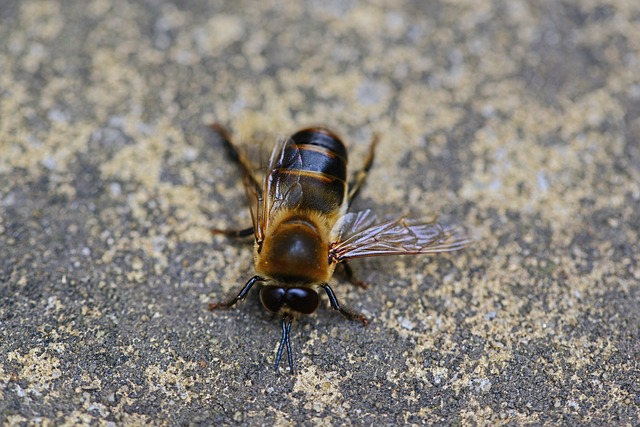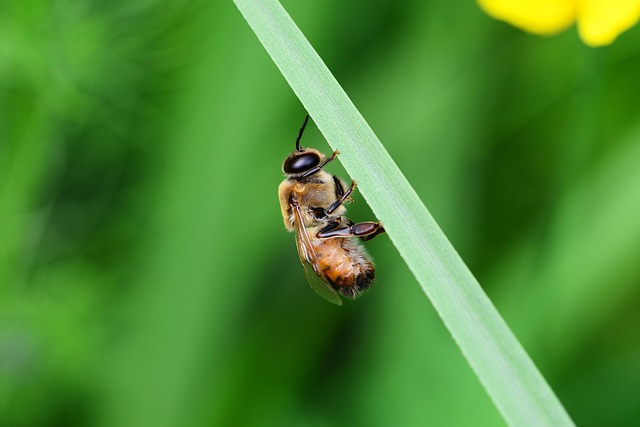Have you ever wondered how the bees reproduce? If you are not a beekeeper probably not. But let me tell you, it is one heck of a story.
It all starts in the swarm season, which here in Germany is in the spring, mostly in May, when the bee colonies start to produce a lot of male bees, the drones. These cute little creatures are much bigger than the female worker bees, even bigger than the queen herself, and are easily recognized by their huge eyes.
Unlike the female worker bees, the drones don’t have a stinger. And they also won’t work as the females do. They can’t even feed themselves and have to be fed by the worker bees. Their only use inside the hive is for heating purposes when it is really cold at night. Since they are bigger, they can produce a lot more heat than the smaller females by vibrating with their wings. The drones live as vagabonds and fly out to different hives in the area, enjoying their bachelor’s life.

But this lazy lifestyle comes to an end when the young queens hatch and the swarming begins. When a bee colony wants to split, the worker bees start to build special cells, where new queens are produced. The larvae inside these cells are fed with the special gelee royale, which makes them become fertile females: queens. The worker bees are infertile females. These special cells are also bigger thane the ones for the worker bees since the queens are much bigger. Right before the new queens hatch, they make a loud noise inside their cell. This is the signal for the old queen to fly out with a big chunk of the worker bees to start a new colony. These bees are the beeswarms.

The reaming bees greet their freshly hatched queen and continue their everyday business. The first queen that hatches in a hive immediately starts killing the queens in the other cells before they are able to hatch. There can only be one queen to reign.
In this stage, the young queen can’t lay eggs yet. She has to be impregnated by the male bees. And this is where it gets really interesting. The young queen of course isn’t impregnated by the drones inside the hive, these are her own brothers. In order to mate with drones from other hives, she has to meet up with them in a special place: the mating spot.

Until now, we have no idea how the bees choose this location, because it changes every year. But all young queens and all the drones know instantly where to go at this moment. And the spot can be up to 20 km away from a single hive. Yet all the bees now exactly when and where to go, even although they never have been there themselves nor has there been another bee from the previous year mating, which could have told them where to go. How they know this is one of the many mysteries, the bees still have left until now.
When the queens enter the mating spot, they are immediately greeted by hundreds of drones. Now the mating begins. Males and females come together on the mating flight. The drone attaches himself to the queen and right when he finishes his penis explodes (you can even hear a little „bang“ if you are close enough, so know you know where the word „banging“ comes from…) and the male dies and falls off onto the ground. But the queen isn’t satisfied yet. She mates with up to 20 different drones. But the drones after the first one have a slightly more difficult job. In order to be able to mate with the queen, they have to pull out the remaining penis from the previous drone, which is still inside the queen.
When the queen has acquired enough semen to last her whole life (she stores them in a special organ and uses one sperm at a time to fertilize each egg), she flies back home to her own bee colony. During the mating flight, she is accompanied by a small number of worker bees, which protect her during the process. Back home one of those bees has to pull out the last drone’s penis. Now her ovaries evolve fully and she becomes unable to fly (remember the old queen wich flies out while swarming? She has to be put on a special diet a few days prior in order to be able to fly again). After a few days, the queen starts laying eggs and the cycle of life continues.
Fabian Kalis